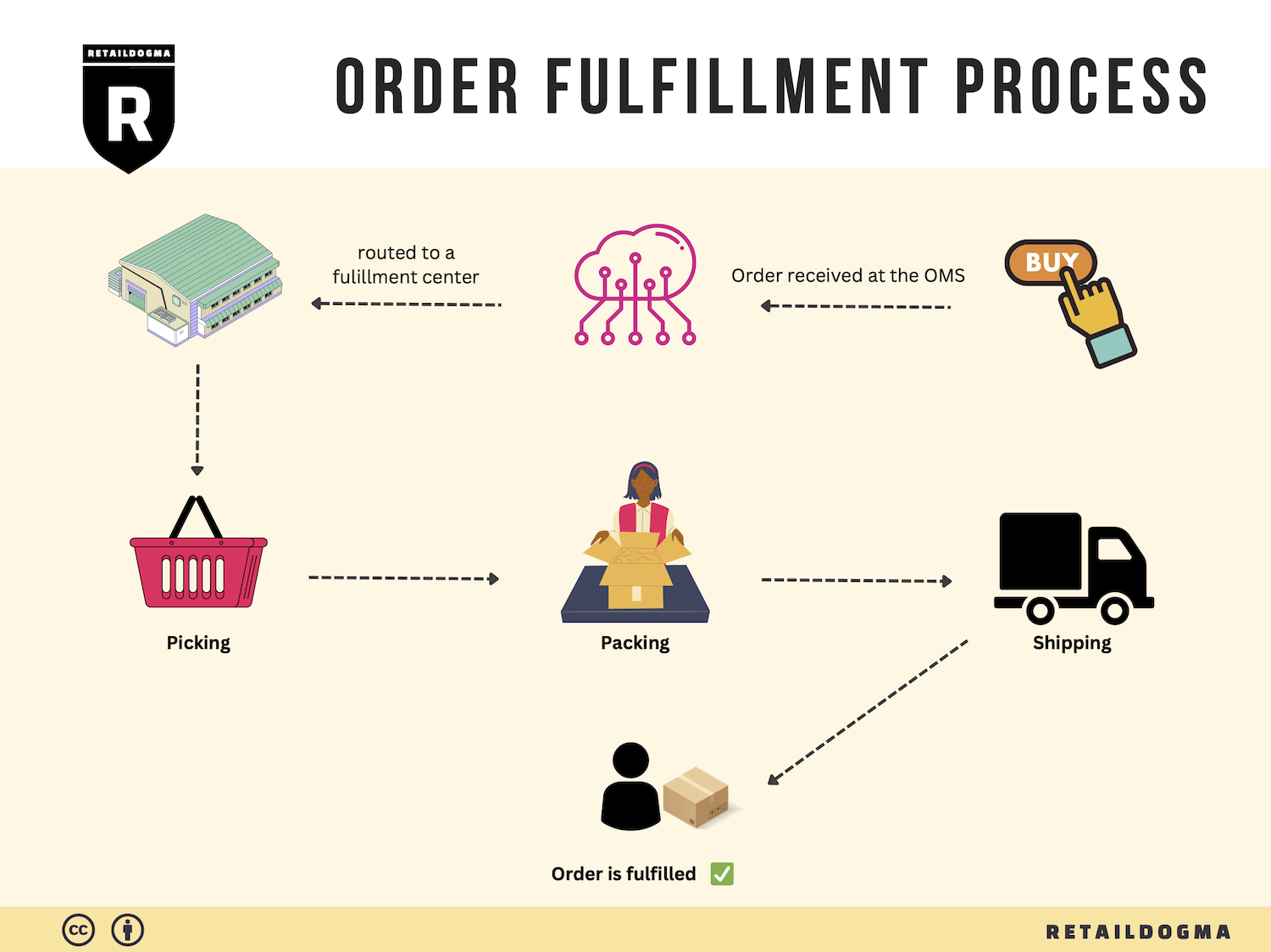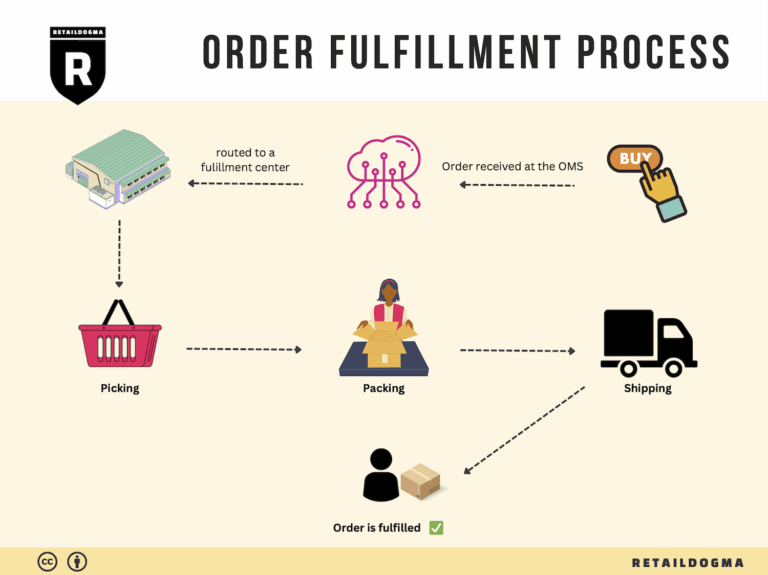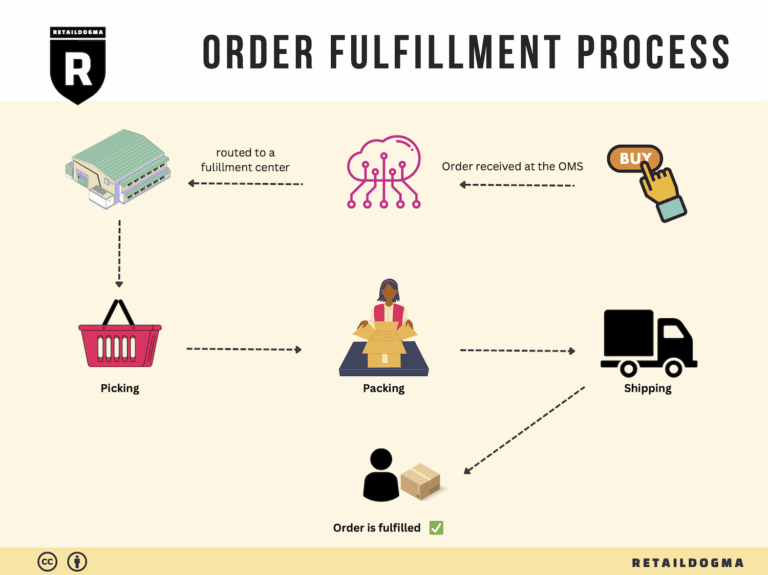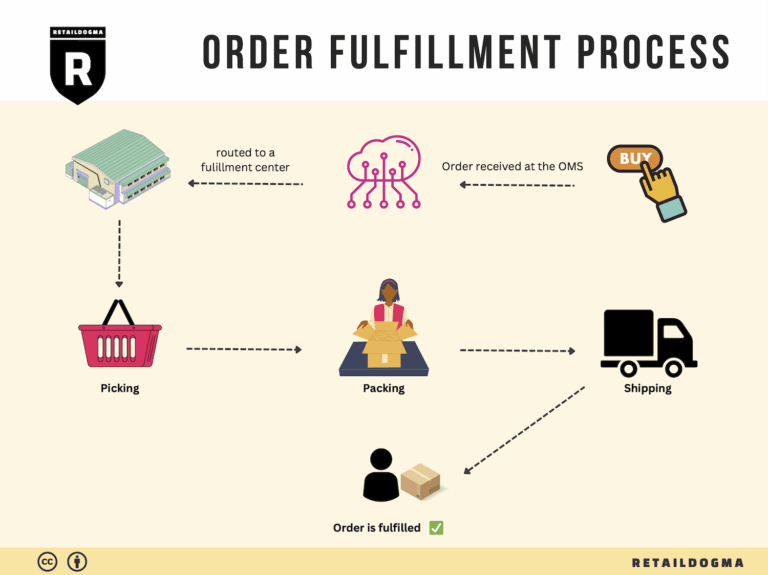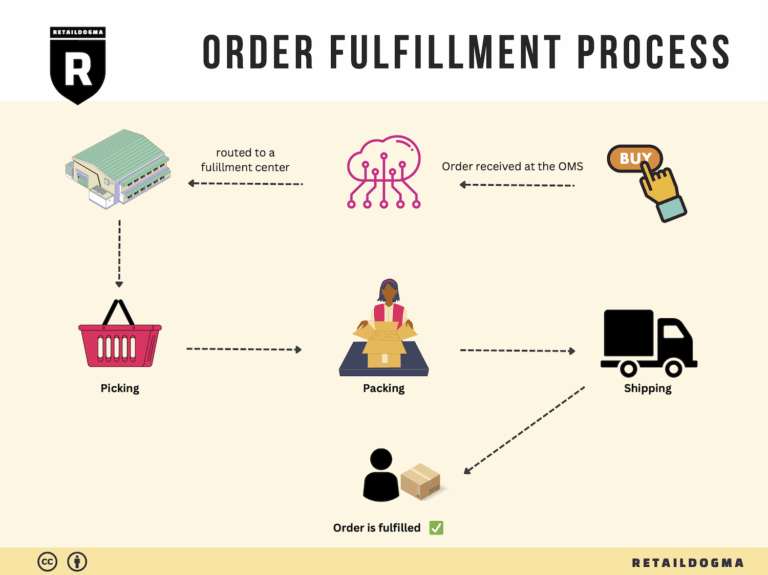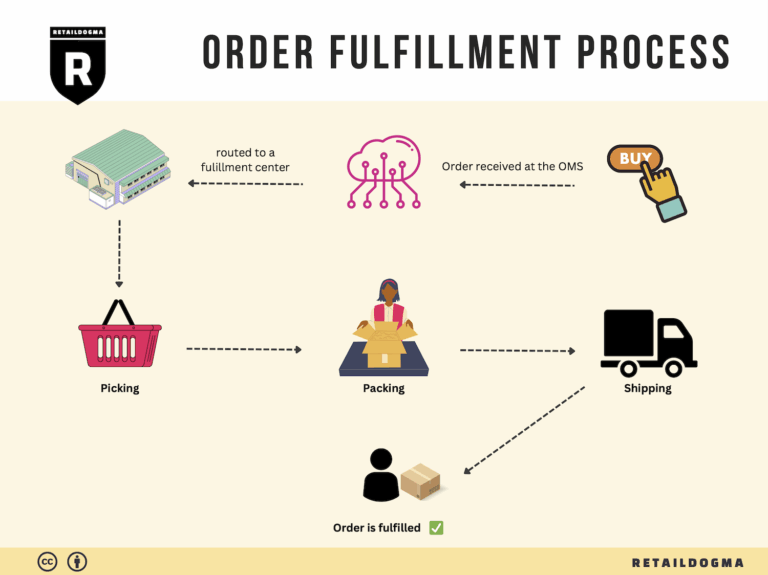What Is A Fulfillment Center? A Complete Guide (2025)
What is E-commerce Fulfillment? An Introduction for Growing Businesses
Navigating the Challenges of E-commerce Fulfillment
As e-commerce businesses scale, many owners and operations managers find themselves grappling with the overwhelming tasks of packing and shipping orders. The excitement of growing sales can quickly turn into stress as logistics become more complex. With every new order, the demand for timely and accurate fulfillment increases, and inefficiencies can lead to customer dissatisfaction, lost sales, and ultimately, harm to your brand reputation.
At its core, e-commerce fulfillment is the comprehensive process of getting a product from your inventory to the customer’s doorstep. It encompasses everything from inventory management and order processing to packing, shipping, and returns handling. Understanding this process is crucial for any growing business, as it directly impacts customer experience and operational efficiency.
This guide aims to demystify e-commerce fulfillment by exploring several key components that are essential for businesses looking to optimize their logistics. First, we will delve into various fulfillment models, including Third-Party Logistics (3PL) and Fulfillment by Amazon (FBA), examining the pros and cons of each approach. Choosing the right model can significantly affect your operational scalability and cost-effectiveness.
Next, we will outline the core services that fulfillment partners typically provide. This includes warehousing, inventory management, order processing, packaging, and shipping. Understanding these services will help you identify what you truly need from a partner to meet your business goals.
Choosing the right fulfillment partner is a critical decision that can determine the success of your logistics strategy. This guide will provide practical tips on evaluating potential partners, including factors like technology integration, service reliability, and customer support.
Pricing is another crucial aspect that we will cover, as understanding the cost structures of different fulfillment options is essential for budgeting and financial planning. We will break down common pricing models and highlight hidden costs that may arise, enabling you to make informed decisions.
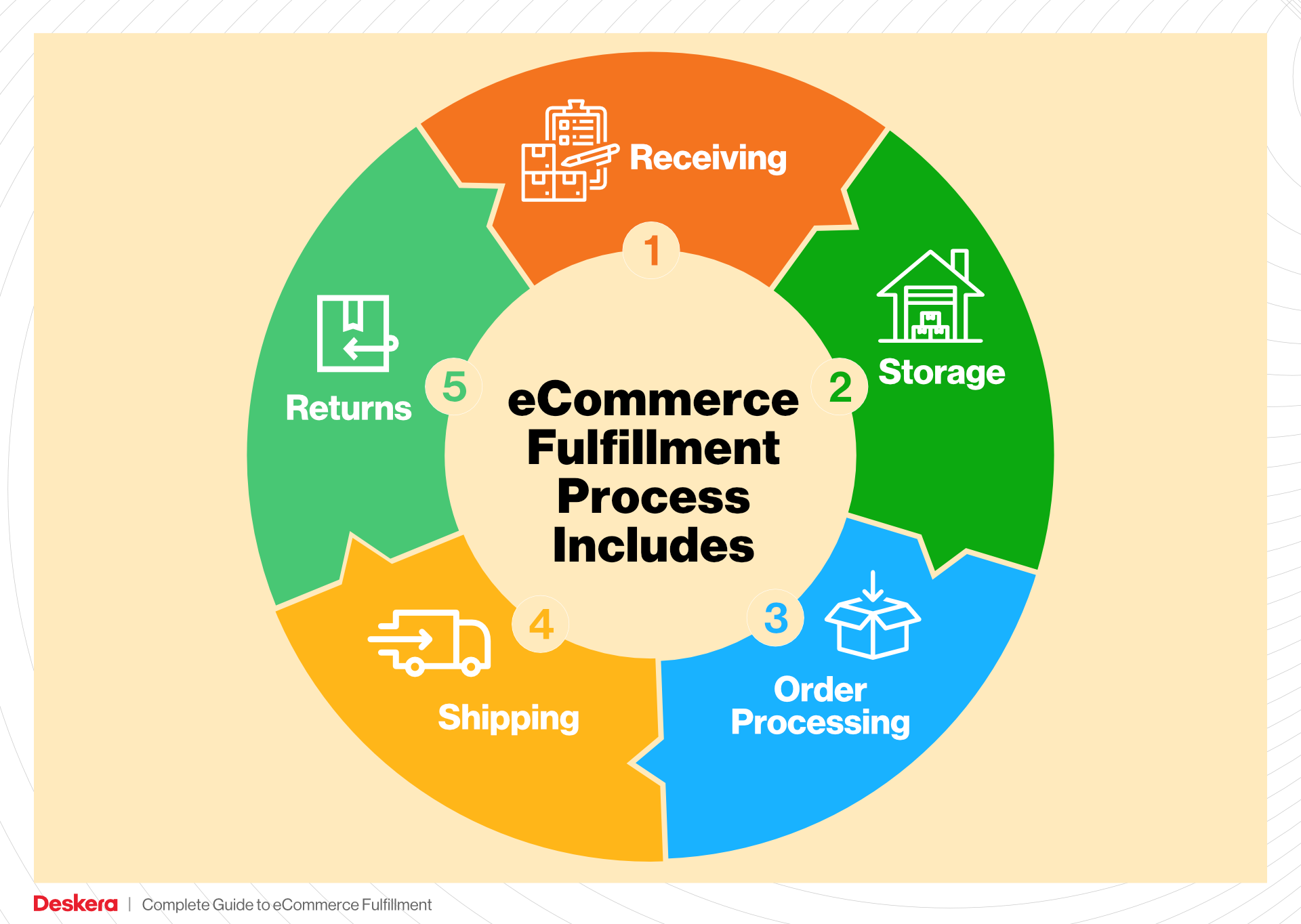
Ultimately, our goal is to empower your business to make smart, strategic decisions about your logistics. By understanding the fundamentals of e-commerce fulfillment, you can streamline your operations, enhance customer satisfaction, and set the stage for sustainable growth in your online business.
What You’ll Learn In This Guide
- What is E-commerce Fulfillment? An Introduction for Growing Businesses
- The Order Fulfillment Process: From ‘Buy’ Button to Customer’s Door
- Comparing Fulfillment Models: In-House vs. 3PL vs. Dropshipping
- A Deep Dive into Amazon FBA: Pros, Cons, and Who It’s For
- Core Services Offered by Fulfillment Centers
- How to Choose a Fulfillment Partner: A 6-Point Checklist
- Understanding Fulfillment Pricing: A Breakdown of Common Fees
- Frequently Asked Questions (FAQs) about Fulfillment
- Conclusion: Is Outsourcing Fulfillment the Right Move for Your Business?
- Important Disclaimer
The Order Fulfillment Process: From ‘Buy’ Button to Customer’s Door
1. Receiving Inventory
The order fulfillment process begins with receiving inventory from suppliers. When products arrive at the fulfillment center, they are checked against purchase orders to ensure accuracy in quantity and condition. This step is crucial for maintaining inventory integrity and preventing stock discrepancies.
A key term associated with this phase is SKU (Stock Keeping Unit), a unique identifier assigned to each product. Properly managing SKUs allows businesses to track inventory levels accurately and streamline subsequent processes. Efficient receiving practices, such as utilizing barcode scanning technology, can significantly reduce errors and improve the speed of inventory intake. For businesses looking to scale, optimizing the receiving process helps ensure that stock is available for quick order fulfillment, enhancing customer satisfaction.
2. Warehouse Storage
Once inventory is received and verified, it is stored in the warehouse. Effective warehouse storage strategies are vital for maximizing space utilization and ensuring easy access to products. Products are often organized based on various factors, such as product type, size, or demand frequency, to facilitate efficient retrieval.
A crucial concept in this stage is ABC analysis, a method of categorizing inventory into three classes (A, B, and C) based on their importance. Class A items are high-value products with a low frequency of sales, while Class C items are low-value but high-frequency products. By strategically placing high-demand items closer to the shipping area, businesses can optimize their picking process and reduce order processing times. For scaling e-commerce operations, effective warehouse storage not only enhances efficiency but also reduces overhead costs.
3. Order Picking
With products stored and organized, the next step is order picking, where items are selected to fulfill customer orders. This process can be carried out using various methods, including single-order picking, batch picking, and zone picking, depending on the scale and complexity of operations.
Pick lists are essential tools used during this stage. A pick list provides a detailed account of items to be collected for each order, including their SKUs and storage locations. This minimizes the time spent searching for items and helps ensure accuracy in order fulfillment. Implementing technologies such as voice picking or pick-to-light systems can further enhance picking efficiency. For businesses aiming to scale, optimizing the picking process reduces labor costs and accelerates order turnaround times, which is crucial for maintaining a competitive edge in the e-commerce landscape.
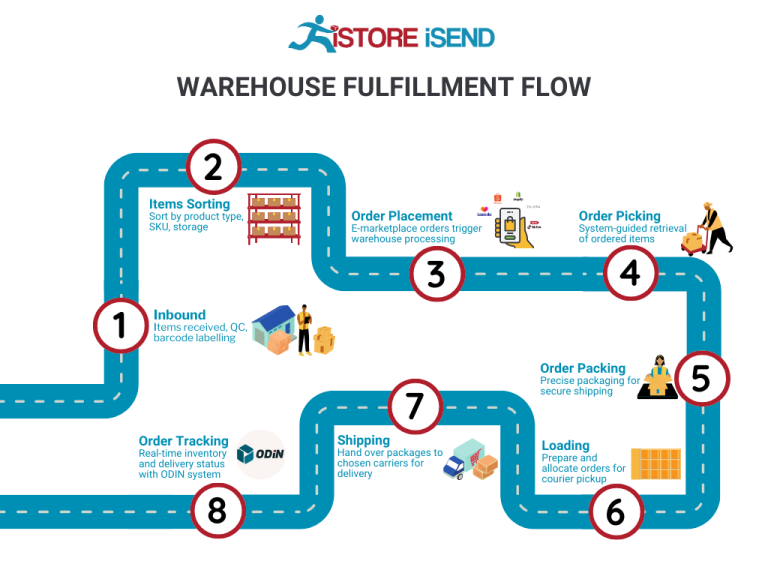
4. Order Packing
Once items are picked, they move on to the packing stage. Here, products are securely packaged to prevent damage during transit, and shipping labels are generated. Effective packing is not only about protection but also about ensuring that packages are shipped in a cost-effective manner.
A key term in this step is dimensional weight pricing, a shipping method that considers package dimensions in addition to weight to calculate shipping costs. Businesses can reduce shipping expenses by optimizing package sizes and using the right materials. Additionally, incorporating branded packaging can enhance the customer experience and reinforce brand identity. For e-commerce businesses looking to scale, efficient packing processes can lead to significant cost savings and improved customer satisfaction through timely and safe deliveries.
5. Shipping & Delivery
The final step in the order fulfillment process is shipping and delivery. Once orders are packed, they are handed over to shipping carriers for transport to customers. This stage is critical as it directly impacts customer satisfaction and delivery timelines.
Last-mile delivery is a term that refers to the final leg of the shipping journey, where packages are delivered from a distribution center to the customer’s doorstep. This phase can be challenging due to varying customer locations and expectations for delivery speed. To enhance last-mile delivery, businesses can leverage technology such as route optimization software and real-time tracking systems, allowing customers to receive updates on their order status. For scaling businesses, investing in efficient shipping and delivery solutions is essential for maintaining a positive customer experience and fostering loyalty.
In conclusion, the order fulfillment process is a complex but essential aspect of e-commerce operations. By mastering each step—from receiving inventory to shipping and delivery—businesses can enhance efficiency, reduce costs, and ultimately provide a superior customer experience. As you scale your operations, consider how optimizing these processes can yield significant benefits for your business.
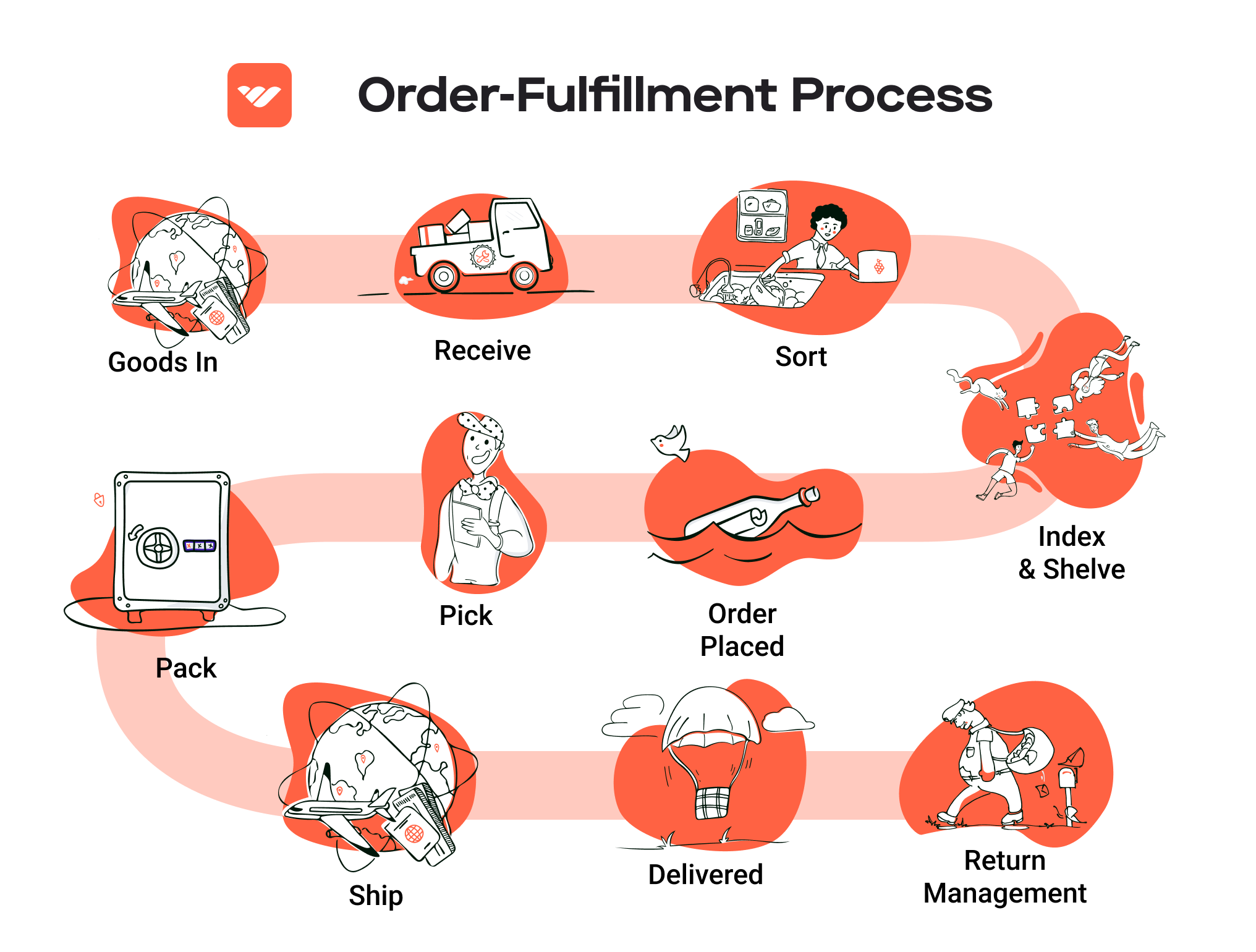
Comparing Fulfillment Models: In-House vs. 3PL vs. Dropshipping
Fulfillment Model Comparison
| Model | Who Handles Inventory | Best For (Business Stage) | Key Advantage | Key Disadvantage |
|---|---|---|---|---|
| In-House Fulfillment | The business itself | Established businesses with steady sales | Full control over inventory and operations | High overhead costs and resource allocation |
| Third-Party Logistics (3PL) | The 3PL provider | Growing businesses looking to scale | Cost-effective and scalable solutions | Less control over inventory and fulfillment processes |
| Dropshipping | Suppliers or manufacturers | Startups or businesses testing new markets | Low upfront investment and risk | Lower profit margins and reliance on supplier reliability |
In-House Fulfillment
In-house fulfillment refers to the process where a business manages its inventory and order fulfillment internally. This model is most suitable for established companies with stable sales and a clear understanding of their logistics needs. With in-house fulfillment, businesses maintain full control over their inventory, allowing them to manage quality, branding, and customer experience directly. This model can be particularly advantageous for companies that have specialized products requiring careful handling or those looking to implement unique fulfillment processes tailored to their customer base.
However, the in-house model also comes with significant downsides. The primary disadvantage is the high overhead costs associated with warehousing, staffing, and technology investments. Businesses must allocate considerable resources to manage inventory, shipping, and customer service, which can divert focus from core competencies like marketing and product development. Additionally, scaling up operations can be challenging, as it often requires additional investments in infrastructure and staff.
Third-Party Logistics (3PL)
Third-party logistics (3PL) involves outsourcing the storage and fulfillment of goods to a specialized provider. This model is ideal for growing businesses that need to scale their operations without the burden of managing logistics in-house. 3PL providers offer a range of services, including warehousing, inventory management, and shipping, allowing businesses to focus on their core activities while leveraging the expertise of logistics professionals.
The key advantage of using 3PL is cost-effectiveness. By outsourcing fulfillment, businesses can reduce overhead costs associated with maintaining their own warehouses and staff. 3PL providers typically have established systems and processes, allowing for faster scaling and the ability to tap into advanced technologies, such as automated inventory management and logistics tracking. However, the downside is the potential loss of control over inventory and fulfillment processes. Businesses may face challenges in aligning their operations with the 3PL provider’s systems, which can affect customer experience if not managed properly. Additionally, issues such as inventory mismanagement or delays in shipping can arise if the 3PL provider does not meet performance expectations.
Dropshipping
Dropshipping is a fulfillment model where a business does not hold inventory but instead relies on suppliers or manufacturers to fulfill customer orders directly. This model is especially appealing to startups or businesses testing new markets, as it requires minimal upfront investment and reduces the risks associated with unsold inventory. With dropshipping, businesses can offer a wide range of products without the financial burden of purchasing inventory upfront.
The primary advantage of dropshipping is the low operational risk. Entrepreneurs can focus on marketing and sales without worrying about inventory management or shipping logistics. However, dropshipping comes with its own set of challenges. The most significant disadvantage is the lower profit margins compared to in-house fulfillment or 3PL models. Since the business relies on suppliers to handle fulfillment, it may also experience delays or quality issues that can harm customer satisfaction. Furthermore, businesses have less control over product availability and shipping times, which can lead to inconsistencies in customer experience and brand reputation.
Conclusion
Choosing the right fulfillment model is crucial for e-commerce businesses looking to scale effectively. Each model—whether in-house fulfillment, 3PL, or dropshipping—offers distinct advantages and disadvantages that must be weighed against the specific needs and goals of the business. By understanding these differences, entrepreneurs can make informed decisions that align with their operational capabilities and market strategies, ultimately paving the way for sustainable growth.
A Deep Dive into Amazon FBA: Pros, Cons, and Who It’s For
Understanding Fulfillment by Amazon (FBA)
Fulfillment by Amazon (FBA) is a service provided by Amazon that allows e-commerce sellers to store their products in Amazon’s fulfillment centers. Amazon then takes care of storage, packaging, and shipping of the products directly to customers. This service simplifies logistics for sellers and provides a robust infrastructure that can help scale their businesses.
When a customer places an order for an FBA product, Amazon handles the entire process—from picking the product off the shelf to packing it and shipping it. Additionally, Amazon manages customer service and returns for FBA orders, allowing sellers to focus more on marketing and product development rather than logistics.
How FBA Works
-
Setup: Sellers create an Amazon seller account and enroll in the FBA program. They then prepare their products for shipment to Amazon’s fulfillment centers, adhering to specific packaging and labeling guidelines.
-
Storage: Once the products arrive at the fulfillment center, they are stored until sold. Sellers are charged storage fees based on the amount of space their products occupy.
-
Order Fulfillment: When a customer orders a product, Amazon picks, packs, and ships it. The shipping is typically fast, often with options for same-day or two-day delivery through Amazon Prime.
-
Customer Service: Amazon handles all customer service inquiries and returns for FBA orders. This includes managing refunds and exchanges, which can be a significant time-saver for sellers.
-
Payment: After the sale, sellers receive payment minus Amazon’s fees, which include referral fees and fulfillment fees.
Pros of Using FBA
-
Prime Eligibility: Products fulfilled by Amazon are automatically eligible for Amazon Prime, which can significantly increase sales. Prime members are more likely to purchase items that come with free and fast shipping.
-
Customer Trust: Amazon has built a reputation for reliability and customer service. When customers see that a product is fulfilled by Amazon, they often feel more confident in their purchase, leading to higher conversion rates.
-
Multi-Channel Fulfillment: FBA can be utilized not just for Amazon sales, but also for sales made on other platforms, such as eBay or a seller’s own website. This flexibility allows businesses to centralize their logistics operations.
-
Scalability: FBA allows sellers to scale their operations without the need to invest in their own warehousing and shipping infrastructure. This can be especially beneficial for small businesses and startups looking to grow quickly.
-
Time Savings: By outsourcing fulfillment to Amazon, sellers can focus on other critical areas of their business, such as marketing and product development.
Cons of Using FBA
-
High Fees: FBA comes with various fees, including storage fees and fulfillment fees. These costs can add up, especially for sellers with low-margin products or those who store inventory for extended periods.
-
Strict Inventory Rules: Amazon has stringent guidelines regarding inventory management, including storage limits and labeling requirements. Sellers must stay compliant to avoid penalties, which can be time-consuming.
-
Commingling Risks: FBA products may be commingled with those from other sellers, meaning that when a customer orders a product, they may receive an item from a different seller. This can lead to quality control issues and brand reputation risks.
-
Limited Control: By using FBA, sellers relinquish some control over their shipping and handling processes. This can be concerning for businesses that prioritize brand experience and customer interaction.
-
Returns Management: While Amazon handles returns, this can sometimes lead to losses for sellers, especially if returned items are damaged or unsellable.
Who is FBA Best For?
Fulfillment by Amazon is particularly advantageous for:
-
E-commerce Startups: New sellers can leverage Amazon’s extensive logistics network and customer base without the need for heavy upfront investments in infrastructure.
-
Businesses with High Sales Volume: Companies that anticipate high sales volume can benefit from FBA’s ability to scale operations efficiently while keeping up with demand.
-
Sellers of Small, Lightweight Products: Items that are small and lightweight often incur lower shipping and storage fees, making FBA a cost-effective option.
-
Multi-Channel Sellers: Businesses that sell across various platforms can streamline their fulfillment process by using FBA for all their logistics needs.
-
Brands Looking to Build Trust: Sellers who want to enhance customer trust and credibility may find that FBA’s association with Amazon’s brand can help improve their sales.
In conclusion, Fulfillment by Amazon offers a powerful solution for e-commerce businesses looking to streamline logistics and enhance customer satisfaction. However, it is essential for sellers to weigh the benefits against the potential downsides, particularly regarding fees and inventory management, to determine if FBA aligns with their business goals and operational capabilities.
Core Services Offered by Fulfillment Centers
Inventory Management & Warehousing
Inventory management is the backbone of any successful e-commerce operation. Fulfillment centers provide a robust warehousing solution that enables businesses to store their products securely and efficiently. These centers utilize advanced inventory management systems that track stock levels, product locations, and sales data in real-time.
The primary benefit of effective inventory management is the reduction of costs associated with overstocking or stockouts. By leveraging a fulfillment center’s capabilities, e-commerce businesses can optimize their inventory levels based on demand forecasts, ensuring that popular items are readily available while minimizing excess stock. This balance helps maintain cash flow and reduces the risk of markdowns on unsold inventory.
Additionally, fulfillment centers often offer climate-controlled storage options for sensitive products, ensuring that items are kept in optimal conditions. This is particularly beneficial for businesses selling perishable goods or items that require specific environmental conditions, thereby extending the product lifespan and ensuring quality upon delivery.
Pick and Pack Services
Pick and pack services are a critical function within fulfillment centers that directly impact order accuracy and customer satisfaction. This process involves selecting products from inventory based on customer orders and packing them securely for shipment. Fulfillment centers utilize sophisticated picking technology, such as barcode scanners and automated systems, to enhance efficiency and accuracy.
The benefits of utilizing pick and pack services are manifold. Firstly, they significantly reduce the time it takes to process orders, allowing e-commerce businesses to meet customer expectations for fast delivery. In an era where same-day or next-day shipping is becoming the norm, speed is essential for maintaining a competitive edge.
Secondly, fulfillment centers employ trained staff who specialize in packing products securely to minimize damage during transit. This attention to detail leads to fewer returns and enhances customer satisfaction, as clients receive their orders in perfect condition. Moreover, fulfillment centers often offer branded packing options, allowing businesses to create a memorable unboxing experience for their customers, which can lead to increased loyalty and repeat purchases.
Kitting and Assembly
Kitting and assembly services are particularly valuable for e-commerce businesses that sell products requiring assembly or bundling. This process involves combining multiple individual items into a single package or kit, ready for shipment. For example, a company selling a DIY furniture kit may require various components to be assembled into a single package.
By utilizing kitting and assembly services, businesses can streamline their operations and reduce the complexity of their supply chain. Fulfillment centers can handle the assembly of products, saving time and labor costs for the e-commerce business. This allows companies to focus on other critical areas such as marketing and product development.
Additionally, offering pre-assembled kits can enhance the customer experience by simplifying the purchasing process. Customers appreciate the convenience of receiving a complete package that requires minimal effort to use. This not only improves customer satisfaction but can also lead to higher sales volumes, as bundled products often have higher perceived value.
Returns Management (Reverse Logistics)
Returns management, or reverse logistics, is an essential service offered by fulfillment centers that can significantly impact an e-commerce business’s profitability. This process involves handling product returns efficiently and effectively, ensuring that returned items are processed, restocked, or disposed of appropriately.
The benefits of a well-structured returns management system are substantial. First and foremost, it improves customer satisfaction by making the return process seamless. A straightforward and hassle-free return policy can enhance customer trust and lead to repeat business, as consumers are more likely to purchase from brands that offer easy returns.
Moreover, fulfillment centers can analyze return data to identify trends and common issues, providing valuable insights into product performance and customer preferences. This information can guide inventory decisions, product improvements, and marketing strategies. By addressing the root causes of returns, businesses can reduce their return rates and improve overall profitability.
In addition, efficient returns management helps recover value from returned products. Fulfillment centers can inspect and refurbish returned items, allowing businesses to resell them at a discount or donate them, thereby minimizing losses and supporting corporate social responsibility initiatives.
Conclusion
Engaging with a fulfillment center provides e-commerce businesses with a comprehensive suite of services designed to streamline operations, enhance customer satisfaction, and ultimately drive growth. From effective inventory management and efficient pick and pack services to specialized kitting and robust returns management, these core services are invaluable for businesses looking to scale. By partnering with fulfillment centers, e-commerce operators can focus on their core competencies while ensuring that logistics and customer fulfillment are handled by experts in the field.
How to Choose a Fulfillment Partner: A 6-Point Checklist
Location & Warehouse Network
Importance:
The location of your fulfillment partner’s warehouses can significantly impact shipping times, costs, and overall customer satisfaction. A strategically placed warehouse network allows for faster delivery to your target market and can reduce shipping expenses.
Questions to Ask:
– Where are your warehouses located, and how do these locations align with my target customer base?
– Do you have a network of warehouses that can support multi-channel fulfillment (e.g., e-commerce, retail)?
– How do you handle shipping to rural or hard-to-reach areas?
– Can you provide insights into your average shipping times to different regions?
Technology & Integrations
Importance:
In today’s e-commerce landscape, technology plays a crucial role in streamlining operations. A fulfillment partner with robust technology solutions can enhance inventory management, order processing, and tracking, leading to improved efficiency and customer satisfaction.
Questions to Ask:
– What technology platforms do you use for order management, inventory tracking, and shipping?
– Can your systems integrate with my current e-commerce platforms (like Shopify, WooCommerce, etc.)?
– Do you offer real-time tracking for both my team and my customers?
– How often do you update your technology and what is your approach to maintaining system security?
Specializations (e.g., Cold Storage, Oversized Items)
Importance:
If your products require special handling—such as temperature-sensitive items or oversized goods—partnering with a fulfillment provider that specializes in these areas is vital. This ensures compliance with safety regulations and maintains product quality.
Questions to Ask:
– What specific types of products do you specialize in handling?
– Do you have specialized facilities (e.g., climate-controlled environments) for certain product categories?
– What protocols do you have in place for managing hazardous materials or perishable goods?
– Can you handle custom packaging or assembly for unique product requirements?
Scalability & Capacity
Importance:
As your business grows, your fulfillment partner should be able to scale with you. This includes having the capacity to handle increased order volumes, additional product lines, and expanding geographic reach without compromising service quality.
Questions to Ask:
– How do you manage capacity during peak seasons or unexpected spikes in order volume?
– What is your process for onboarding new clients or product lines?
– Can you provide examples of how you’ve scaled operations for other clients?
– What are the limitations of your current facilities in terms of storage and order processing?
Pricing and Contracts
Importance:
Understanding the pricing structure and contract terms is essential to maintaining profitability and ensuring there are no hidden fees that could erode margins. A transparent pricing model allows for better budgeting and financial planning.
Questions to Ask:
– What is your pricing structure for storage, picking, packing, and shipping?
– Are there any additional fees that I should be aware of (e.g., for returns, special handling)?
– How long are your contracts, and what are the terms for cancellation or scaling down services?
– Do you offer flexible pricing models based on order volume or seasonal demand?
Customer Support & Reviews
Importance:
Reliable customer support is crucial for resolving issues quickly and maintaining smooth operations. Additionally, checking reviews and testimonials can provide insights into the partner’s reliability and service quality.
Questions to Ask:
– What customer support options do you offer (e.g., phone, email, live chat)?
– How do you handle operational issues or service disruptions?
– Can you provide references or case studies from current or past clients?
– What is your process for gathering and acting on customer feedback?
By addressing these six critical points, e-commerce business owners and operations managers can make informed decisions when selecting a fulfillment partner. This checklist serves as a practical guide to ensure that the chosen partner aligns with your business needs and growth objectives.
Understanding Fulfillment Pricing: A Breakdown of Common Fees
Initial Setup Fees
Initial setup fees are the costs associated with onboarding your business onto a fulfillment platform or service. These fees can vary widely depending on the provider and the complexity of your inventory. Typically, this fee covers the initial configuration of your account, integration with your e-commerce platform, and any necessary training for your team.
The calculation of initial setup fees often includes:
- Account Setup: A flat fee for creating and configuring your account.
- Integration Costs: Additional charges may apply if you require custom API integrations or software configurations.
- Training: Some providers offer training sessions for your staff, which may be included in the setup fee or charged separately.
To minimize initial costs, consider providers that offer free or low-cost onboarding, especially if you’re a small business or just starting.
Receiving Fees
Receiving fees are charged for the process of accepting and processing your inventory when it arrives at the fulfillment center. This fee is typically calculated per unit or per pallet and includes the labor and resources needed to unload, inspect, and store your products.
Factors that affect receiving fees include:
- Volume: Larger shipments may benefit from lower per-unit costs, while smaller shipments may incur higher fees.
- Complexity: If your products require special handling, such as temperature control or fragile packaging, expect to pay additional fees.
- Time Sensitivity: Expedited receiving processes may also come with a premium.
To optimize receiving fees, ensure that shipments are organized and labeled correctly, which can speed up processing time.
Storage Fees (per pallet/bin)
Storage fees are charged for the space your products occupy in the fulfillment center. These fees can be structured in various ways, but they are commonly calculated on a monthly basis per pallet or per bin.
Key considerations for storage fees include:
- Duration: The longer your products remain in storage, the more you will pay. Some providers may offer tiered pricing that decreases per pallet as volume increases.
- Type of Storage: Specialized storage, such as climate-controlled environments, will typically incur higher fees than standard storage.
- Inventory Turnover: Slow-moving products may lead to higher overall storage costs, so consider strategies to enhance inventory turnover.
To effectively manage storage fees, conduct regular inventory audits and remove slow-moving items to minimize unnecessary costs.
Pick & Pack Fees (per item/order)
Pick and pack fees are incurred each time an order is processed and shipped. This fee typically includes the cost of picking the items from storage and packing them for shipment.
The calculation of pick and pack fees often depends on:
- Number of Items: Fees are generally calculated per item, with discounts available for bulk orders.
- Complexity of Packing: If your products require special packing materials or configurations, additional fees may apply.
- Order Size: Larger orders may benefit from reduced per-item fees.
To reduce pick and pack fees, streamline your product selection process and minimize the number of different SKUs in a single order.
Shipping Fees
Shipping fees are the costs associated with delivering products to customers and can vary based on several factors, including destination, weight, and delivery speed.
Common aspects of shipping fees include:
- Carrier Rates: Different carriers (e.g., USPS, FedEx, UPS) have varying rates, which can affect overall shipping costs.
- Shipping Zones: Fees typically increase based on distance from the fulfillment center to the delivery address.
- Service Level: Expedited shipping options will incur higher fees compared to standard shipping.
To optimize shipping fees, consider negotiating rates with carriers, using flat-rate shipping options, or consolidating shipments to reduce costs.
Tips for Getting an Accurate Quote
-
Provide Detailed Information: When requesting a quote, include comprehensive details about your inventory, expected order volumes, and any special handling requirements.
-
Compare Providers: Don’t settle for the first quote you receive. Compare multiple fulfillment centers to understand the range of fees and services offered.
-
Ask About Hidden Fees: Ensure you inquire about any additional costs that may not be included in the initial quote, such as long-term storage fees or seasonal surcharges.
-
Review Contract Terms: Carefully read the terms of service to understand how fees may change over time, especially if your order volume fluctuates.
-
Utilize Online Calculators: Many fulfillment providers offer online calculators to give you a preliminary estimate based on your specific needs.
By understanding these common fulfillment pricing models and following these tips, you can better manage your costs and enhance your e-commerce operations as you scale your business.
Frequently Asked Questions (FAQs) about Fulfillment
1. What is the purpose of an Amazon fulfillment center tour?
The purpose of an Amazon fulfillment center tour is to provide visitors with an inside look at the operations that drive Amazon’s logistics and order fulfillment processes. During the tour, guests can observe how products are stored, picked, packed, and shipped, while gaining insights into the technology and workforce that support these activities.
2. How long does a tour of the DEN3 fulfillment center last?
Each tour at the DEN3 fulfillment center lasts approximately 60 to 90 minutes. This timeframe allows for a comprehensive overview of the facility’s operations and technology, along with time for questions from participants.
3. What attire is required for the tour?
Visitors are required to wear flat, closed-toed shoes with closed heels (no sandals, clogs, or high heels) for safety reasons. Long pants are recommended for additional protection, and shirts must have sleeves. Visitors should avoid loose-fitting clothing and accessories that could pose a safety hazard.
4. Are children allowed on the tour?
Yes, children aged 6 and older are welcome on the tour, provided they are accompanied by a responsible adult. For every ten minors, there must be at least one adult present. Safety rules must be adhered to at all times, and children should be able to walk the tour route without assistance.
5. What identification do I need to bring for the tour?
Guests must present a government-issued photo ID upon arrival. The name on the ID should match the registration information submitted prior to the tour. Children under the age of 18 are not required to provide identification.
6. What is the difference between a warehouse and a fulfillment center?
A warehouse primarily focuses on storing goods, while a fulfillment center is designed to efficiently process and ship orders to customers. Fulfillment centers employ advanced technology and systems to handle inventory, manage order processing, and ensure timely delivery.
7. What is a Third-Party Logistics Provider (3PL)?
A Third-Party Logistics Provider (3PL) is a company that offers outsourced logistics services, including warehousing, transportation, and order fulfillment. E-commerce businesses often partner with 3PLs to streamline their supply chain and improve efficiency without the need to manage logistics in-house.
8. How can I book a tour of the DEN3 fulfillment center?
Tours can be booked through the Amazon Tours website. Availability is released mid-month, so if your preferred date is fully booked, be sure to check back later for new openings. Private group tours can also be requested for groups of 10 to 25 on Wednesdays.
9. Are private tours available for the DEN3 fulfillment center?
Yes, private tours are available for groups of 10 to 25 people and can be scheduled on Wednesdays at specific times. These tours must be arranged in advance and are subject to availability within the same quarter.
10. How much do fulfillment services cost?
The cost of fulfillment services can vary widely based on several factors, including the volume of orders, the types of products being shipped, and the specific services required. It is advisable to contact fulfillment service providers for tailored quotes based on your business needs and volume.
Conclusion: Is Outsourcing Fulfillment the Right Move for Your Business?
Assessing the Value of Outsourcing Fulfillment
Outsourcing fulfillment can be a game-changer for e-commerce businesses looking to scale efficiently. The key benefits are clear: saving time, enhancing scalability, and leveraging specialized expertise. By entrusting fulfillment operations to a third-party service, you free up valuable resources that can be redirected towards core business activities such as marketing, product development, and customer engagement. This not only enhances productivity but also allows you to focus on strategic growth initiatives.
Scalability is another significant advantage. As your business grows, so does the complexity of managing logistics. A reliable fulfillment partner can seamlessly adapt to your changing needs, whether you’re launching a new product line or entering new markets. This flexibility ensures you can meet demand without the overhead of expanding your own warehouse space or workforce.
Moreover, partnering with a fulfillment expert provides access to advanced technology and processes that may be otherwise unavailable to your business. These providers often have sophisticated systems for inventory management, order processing, and shipping that can enhance efficiency and accuracy, ultimately improving customer satisfaction.
However, it’s crucial to select the right fulfillment partner. Conduct thorough due diligence to ensure their capabilities align with your business goals and values. Evaluate their track record, technology infrastructure, and customer service standards.
As a strategic next step, consider auditing your current shipping and fulfillment processes. Analyze whether the efficiencies gained from outsourcing could enhance your operational performance and support your growth objectives. By taking this proactive approach, you can make informed decisions that will propel your business forward in the competitive e-commerce landscape.
Important Disclaimer
⚠️ Important Disclaimer
The information in this guide is for educational purposes. Fulfillment services, pricing, and platform features change frequently. Always conduct your own due diligence and consult with providers directly before making business decisions.
